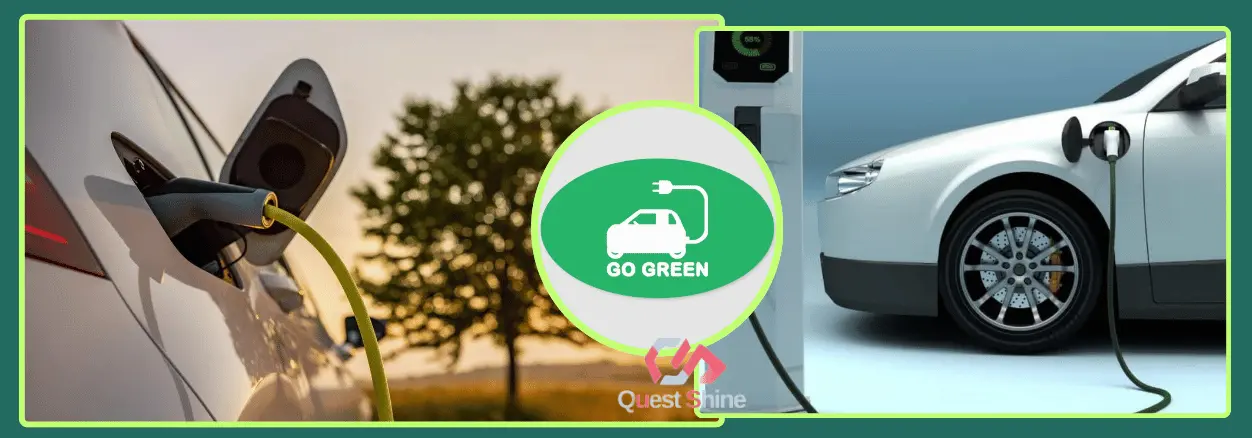Are electric cars green?
How long are they charged? And is there controversy with finding the charging station? The subject of electro mobility raises many questions today, which is why we decided to require an electrical Volkswagen for a ride around Warsaw. We’ve revealed that the devil isn’t that scary, and driving an electrician brings many benefits.
Electric cars are greener
Let’s start with the foremost important one, which is the answer to whether electric cars are a far greener means of transport than burning vehicles?
According to statistics, an indoor combustion car will drive 15,000 a year. Km, will “produce” a couple of tons and 770 kg of carbonic acid gas. In 10 years, it is driving the identical car 15 thousand. Km p.a., it releases the maximum amount as 17.7 heaps of CO2 into the atmosphere. This offers after 10 years of employing a new burning car – adding the environmental cost – about 25 plenty of carbonic acid gas. On the opposite hand, the utilization of electricity in battery-powered cars is totally ecological – it doesn’t increase heating and doesn’t emit harmful toxins. Research shows that electric cars have out and away the most effective balance in CO2 emissions – even with the Polish energy mix supported coal. At the same time, electric cars have the best potential to be the greenest cars.
Charging electric cars is also ecological, especially if we get electricity from renewable sources, i.e., wind, solar, and hydroelectric power plants.
High availability of the station
There is a perception that there are only a few charging stations that are difficult to search out within the city. However, we’d like to refute this myth – there are currently about 650 stations in Poland, which are located within the centers of enormous towns, at gas stations, in parking many shopping malls, and even at chain stores. Volkswagen also provides chargers at its authorized showrooms.
The Volkswagen Group and its partners will build as many as 400 fast-charging stations by 2020, with up to 2,400 stations. It’ll be possible to use 350 public chargers in Poland alone, which might be found on the A1, A2, and A4 motorways.
Charging the battery is quick and hassle-free
Many people believe that to “refuel” electric cars, one should attend a special charging zone and spend many hours anticipating recharging the battery. It seems to be a myth – now, within the e-Golf available on the market, the battery is often charged almost anywhere: reception from a home receptacle or the optional Wallbox system, at a public charging station, or a fast-charging station. The method itself takes, but it seems – tests show that when charging the vehicle from a domestic socket, a full charge takes about 15 hours. On the other hand, at the AC charging station, complete charging will take approx. 5 hours 20 minutes. Optionally, we will also equip the car with a CCS quick charging connector (max 40 kW), where after 45 minutes, the battery is 80% charged.
The manufacturer offers yet one more option, namely the Wallbox system. What’s it about? it’s a home “high power outlet” that may be optionally installed in, as an example, your garage. Then, by connecting your auto to it for the night, you’ll enjoy a charged battery within the morning. The manufacturer assures that this can be a far more convenient solution than refueling, the frequency of which is difficult to predict accurately. Charging overnight is often the identical routine for each user, such as plugging the smartphone into capturing daily before falling asleep.
However, if we wish to charge our car quickly, then the CCS fast-charging connector is beneficial – after 45 minutes, the battery in our car was 80% charged. the electrical Volkswagen ID3 can drive in an even shorter time – the car is going to be equipped with a 100 kW connector, which can allow it to be charged in only a half-hour. (on 290 km of driving).
Car charging is affordable
According to GreenWay, which currently has the most extensive network of charging stations in Poland, the employment of fast chargers for electric cars is that the costliest – then the value of driving 100 km is about PLN 28. For the semi-fast variants, it’s only PLN 18. the most affordable thing is to power the lead-acid battery from a domestic socket – charging during the day costs about PLN 10, while if we take into consideration the night tariff, the value drops to PLN 5. additionally, ” tasting” an electric car from the house is the foremost convenient – we don’t just drive to a service station, we can charge the battery almost anywhere: reception from a home outlet or the optional Wallbox system.
Electricity costs drop to zero after we think about employing free battery charging points. Contrary to appearances, there are still plenty of them on the map of Poland. Additionally, we can use free charging at stations on motorways – the Blue Trail created by the LOTOS Group allows drivers of electric and hybrid cars to travel on the A1 and A2 motorways between Warsaw freely and, therefore, Tri-City.
Traffic lane ride, free parking, and entry to the clean air zone
When it involves traffic in large cities, electrics have a reduced tariff – drivers of such electric cars vehicles can use bus lanes, which allows you to avoid traffic jams efficiently. But that’s not all – the Act on electro mobility and alternative fuels additionally exempt such vehicles from fees in Paid Parking Zones.
Electric cars can enter the clean transport zones that are appearing more and more in Europe. In Poland, the primary clean air zone was established in Krakow. It aims to push green transport and reduce pollution within the middle.
Cheaper servicing
Not only cheap charging, but also cheaper service – the system under the hood of an electrician is far simpler than in a very combustion car, so there’s a far lower risk of failure of individual components. We mean, for instance, constraint and brake discs, which wear much slower because they’re mainly accustomed recover energy during braking. What’s more, we shouldn’t worry about changing the oil or repairing the fuel pump, which is solely not available in these cars.
Electric cars manufacturer also offer good service packages. For instance, e-Golf provides four years of free service and the maximum amount as eight years of warranty for batteries, on which we are going not to exceed 160 thousand. Km.
Long ranges
As we know, the range of electric cars largely depends on the weather on the road and whether we use air-con or heating within the cabin. We’ll already travel from 100 km (at a speed of 140 km / h) to even 250 kilometres with the e-Golf. It all depends on the climate on the road, and whether we use air-con or heating within the cabin.
On the opposite hand, the ID. Family, which can soon be launched with its first model, represents a replacement generation of electric cars, because of which it’s possible to hide for much longer distances on one battery – the soon-to-enter ID.3 with an outsized battery are going to be ready to cover to 550 km. on one charge. All because of the modular MEB platform, within which the first engine location is that the rear, which ends up from the will to distribute the vehicle’s load evenly and at the identical time increase efficiency. This suggests that vehicles supported by MEB technology will cover long distances – the ID.3 with a bigger battery will be able to hide to 550 km.
That’s it when it involves the undeniable benefits of using electric cars. And when it involves our driving experience, we rate it very highly. The dynamics that characterize all electrics gave us lots of fun during the tests.





